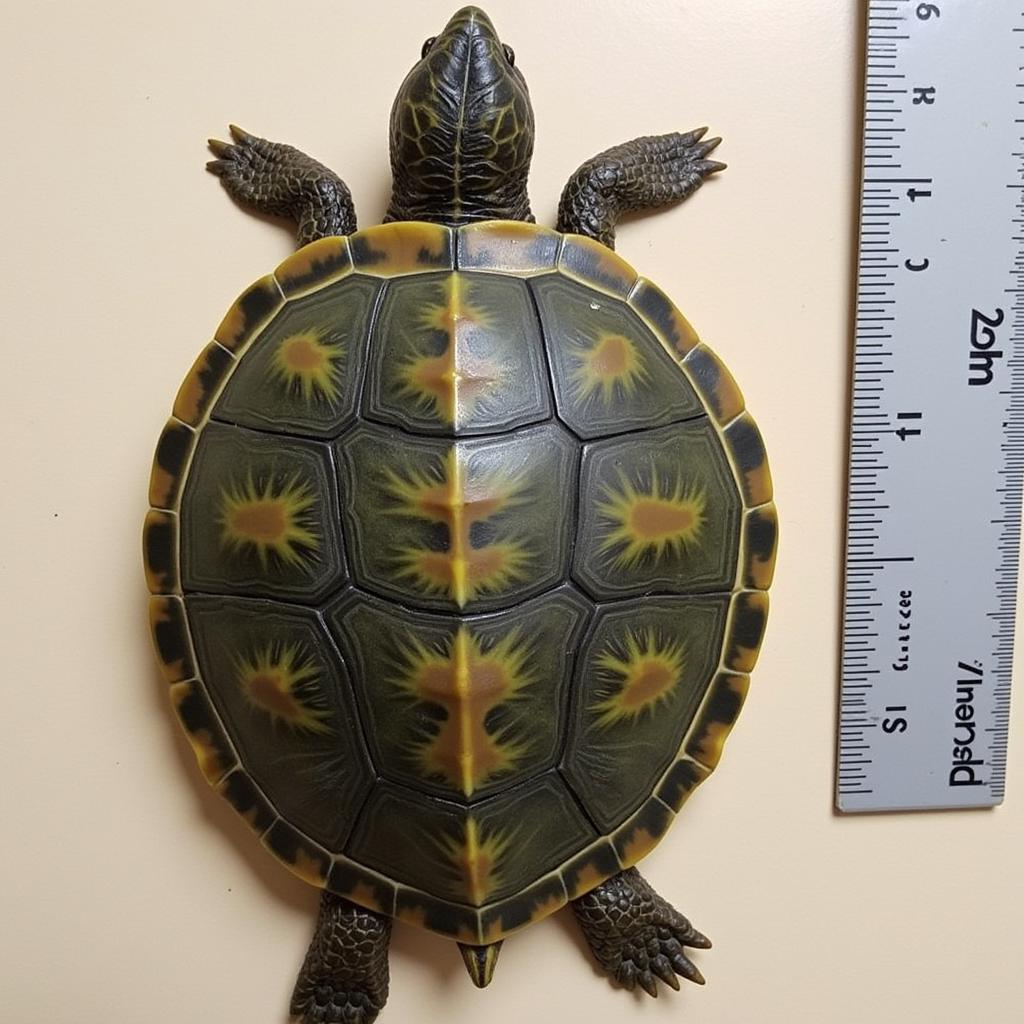The African Aquatic Sideneck Turtle: A Comprehensive Guide
The African Aquatic Sideneck Turtle, also known as the Pelomedusa subrufa, is a fascinating creature native to sub-Saharan Africa and southern regions of the Arabian Peninsula. This guide delves into their unique characteristics, habitat, diet, and the essentials of keeping them as pets. Let’s explore the captivating world of these unique turtles.
Want to know how much one of these fascinating turtles might cost? Check out the African aquatic sideneck turtle price.
Habitat and Distribution of the African Aquatic Sideneck Turtle
These turtles are incredibly adaptable and inhabit various freshwater environments, from rivers and swamps to temporary ponds and even brackish water. Their ability to tolerate a wide range of water conditions contributes to their widespread distribution across Africa. They’re known for their ability to aestivate during dry periods, burying themselves in mud to survive until the rains return. This resilience makes them a truly remarkable species. They share these waters with a variety of African freshwater fish species.
What do African Aquatic Sideneck Turtles Eat?
African aquatic sideneck turtles are omnivores, with a diet consisting primarily of insects, mollusks, crustaceans, fish, amphibians, and carrion. They are opportunistic feeders, meaning they will consume whatever food source is readily available. This adaptable diet is another factor contributing to their survival in diverse environments. Curious about their feeding habits in captivity? Learn more about African aquatic sideneck turtle feeding.
How Big do African Aquatic Sideneck Turtles Get?
Typically, these turtles reach an adult size of around 7-8 inches in shell length, although some individuals may grow slightly larger. If you’re wondering about their size, you can find more information on African aquatic sideneck turtle size.
 Adult African Aquatic Sideneck Turtle Size Comparison
Adult African Aquatic Sideneck Turtle Size Comparison
Keeping African Aquatic Sideneck Turtles as Pets
These turtles can make interesting pets, but their care requires specific considerations. Providing a suitable aquatic environment with appropriate filtration, heating, and lighting is crucial. A varied diet, similar to their natural feeding habits, is essential for their health and well-being. If you are considering acquiring one, you might be interested in finding an African aquatic sideneck turtle for sale.
Tank Setup for an African Aquatic Sideneck Turtle
A spacious tank is essential, providing ample room for swimming and basking. A basking area with a heat lamp allows the turtle to regulate its body temperature, mimicking its natural behavior. Water quality is paramount, so regular water changes and a reliable filtration system are crucial.
 Ideal African Aquatic Sideneck Turtle Tank Setup
Ideal African Aquatic Sideneck Turtle Tank Setup
Conclusion
The African aquatic sideneck turtle is a captivating species, well-adapted to its diverse African habitats. Its unique sideneck posture, omnivorous diet, and ability to aestivate make it a truly remarkable creature. Whether you’re encountering them in the wild or caring for them as pets, understanding their specific needs is crucial for their well-being.
FAQ
- What is the lifespan of an African aquatic sideneck turtle? They can live for several decades with proper care.
- Do they require a special diet? A varied diet of insects, fish, and commercially available turtle pellets is ideal.
- How often should I clean their tank? Regular partial water changes and a good filter are necessary for maintaining water quality.
- Can they be housed with other turtles? It’s generally not recommended due to potential aggression and disease transmission.
- Are they good for beginners? While relatively hardy, they have specific care requirements that should be thoroughly researched before acquiring one.
- What kind of lighting do they need? A UVB lamp is essential for their health and calcium absorption.
- Do they hibernate? They aestivate, burying themselves in mud during dry periods.
Commonly Asked Questions about African Aquatic Sideneck Turtle Behavior
- Why is my turtle always hiding? Hiding can be a sign of stress, illness, or simply a natural behavior, especially for new turtles adjusting to their environment.
- Why is my turtle not eating? Changes in water temperature, incorrect lighting, or illness can affect their appetite.
- Why is my turtle basking excessively? They may be trying to regulate their body temperature or may have an infection requiring veterinary attention.
Further Exploration
For more information on African wildlife, explore our other articles on related topics. You might find our pieces on other African turtle species or freshwater fish of Africa particularly insightful.
Need Help?
When you need assistance, please contact us. Phone Number: +255768904061, Email: [email protected] Or visit our address: Mbarali DC Mawindi, Kangaga, Tanzania. We have a 24/7 customer care team.

